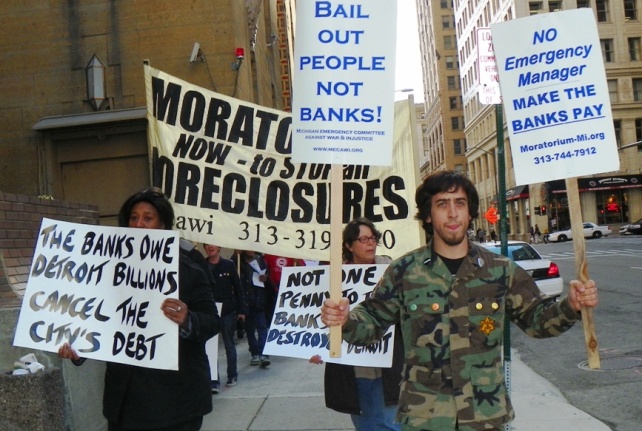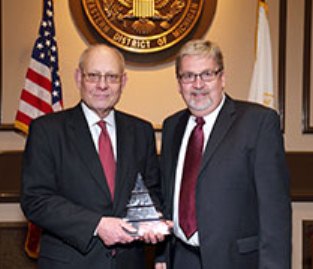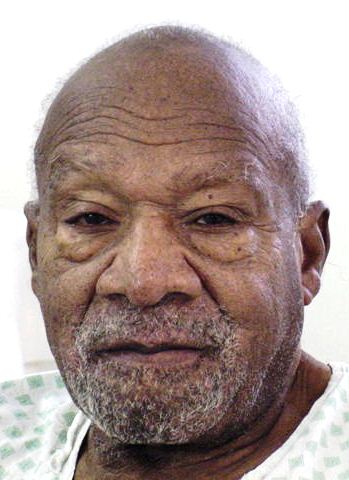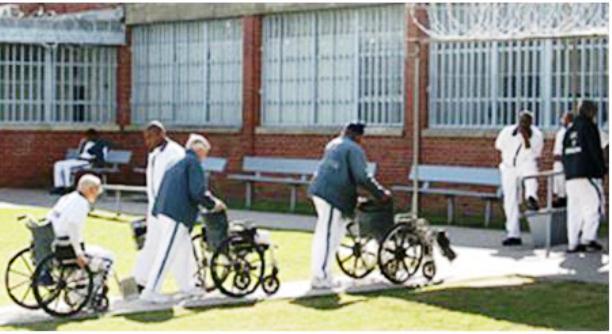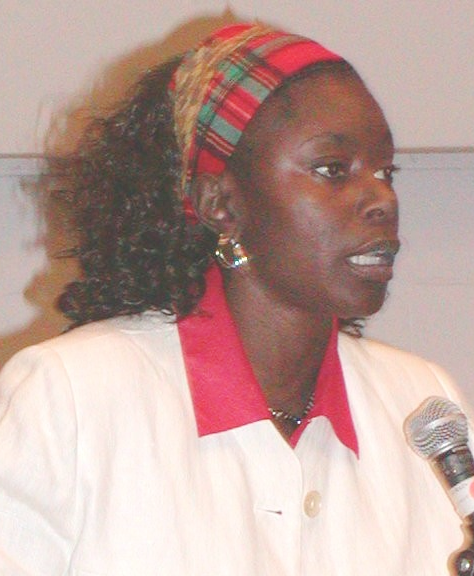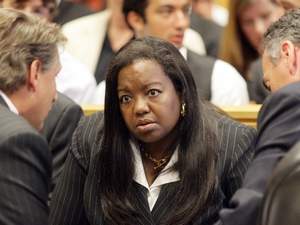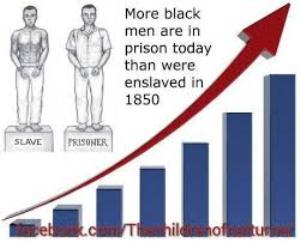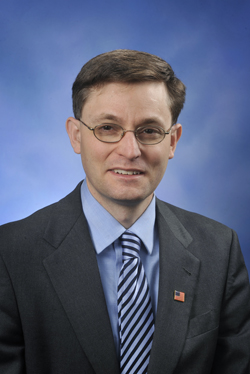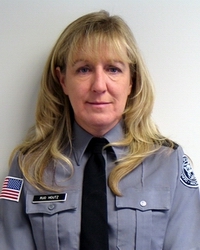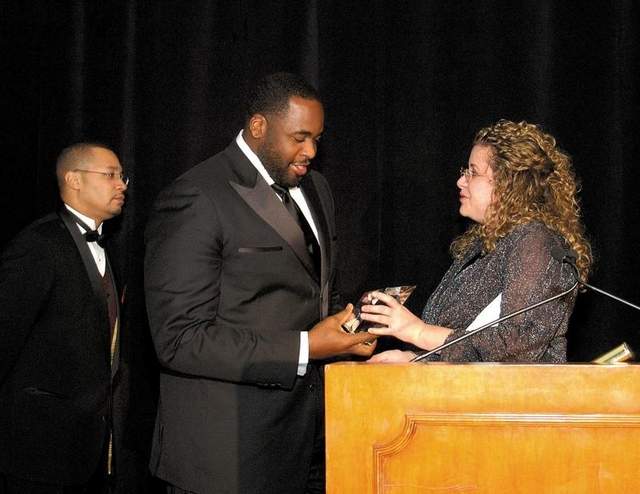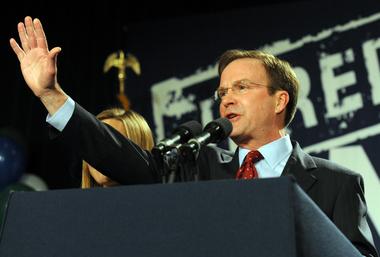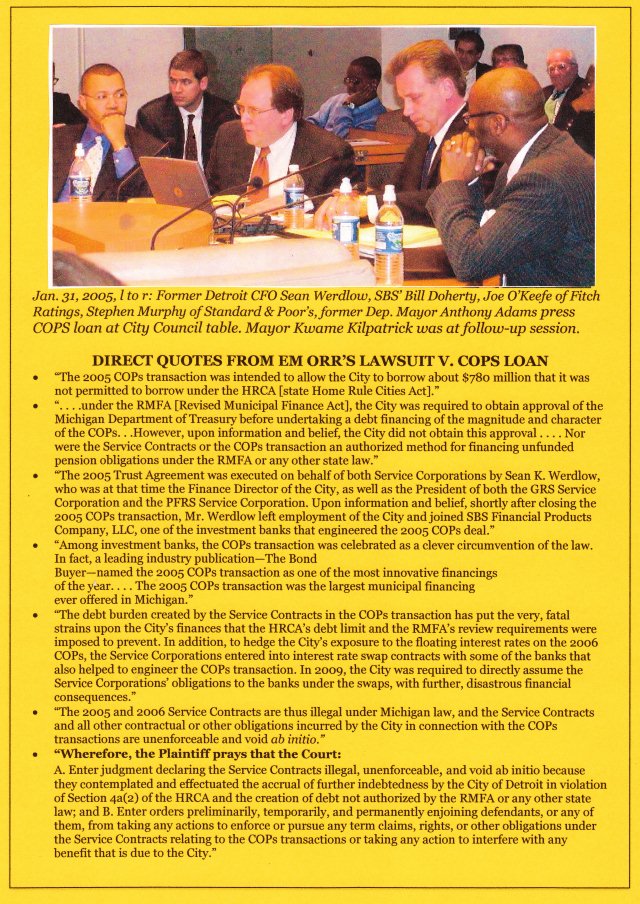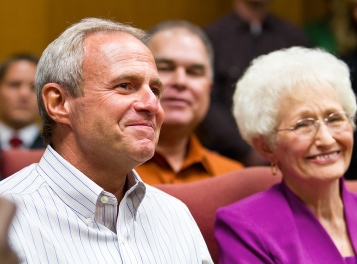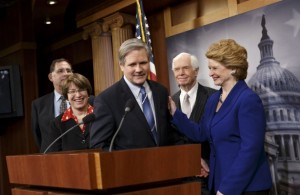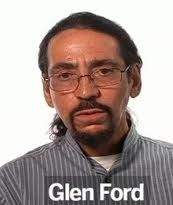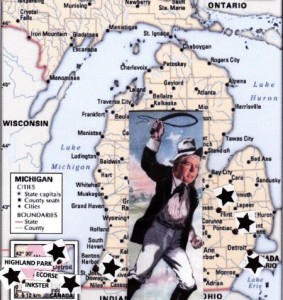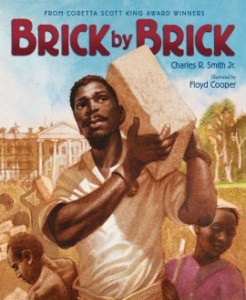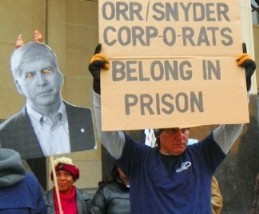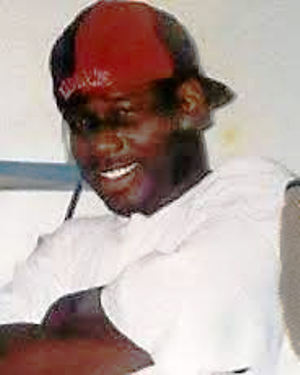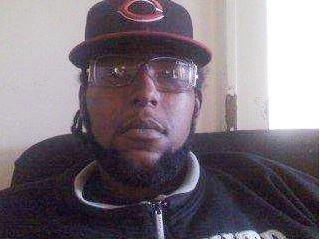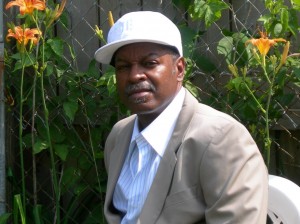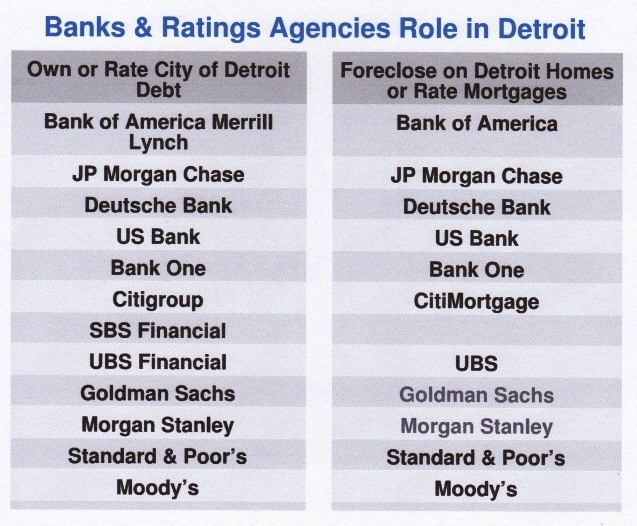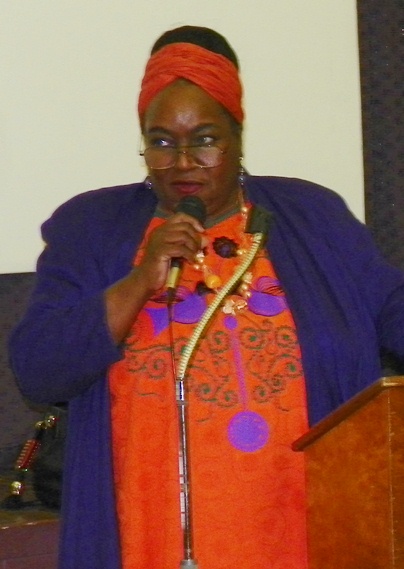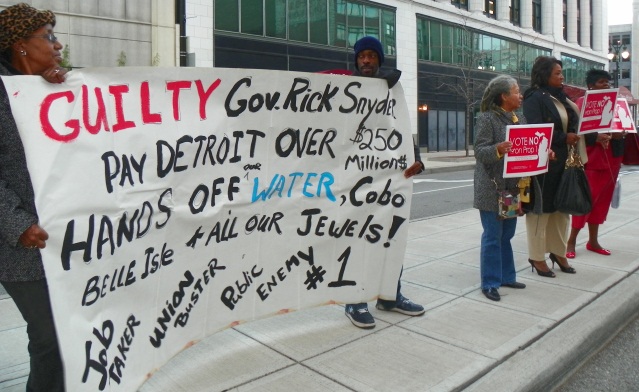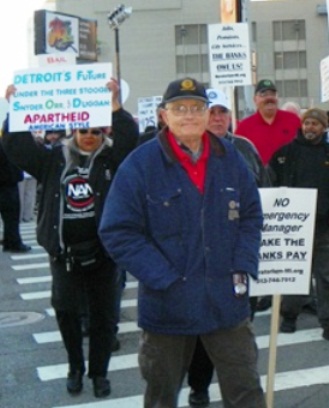 Update Feb. 13, 2013: According to Maria Miller of the Prosecutor’s Office, “Charles Jones was found guilty by a jury of Second Degree Murder and Perjury. Jones was found not guilty of Felon in Possession and Felony Firearm. Jones will be sentenced before Judge Skutt on March 13, 2014 at 9:00 a.m. The verdict for Owens has not announced at this time.” VOD story on the verdict(s) will be forthcoming.
Update Feb. 13, 2013: According to Maria Miller of the Prosecutor’s Office, “Charles Jones was found guilty by a jury of Second Degree Murder and Perjury. Jones was found not guilty of Felon in Possession and Felony Firearm. Jones will be sentenced before Judge Skutt on March 13, 2014 at 9:00 a.m. The verdict for Owens has not announced at this time.” VOD story on the verdict(s) will be forthcoming.
Moran fingers Chauncey Owens for both deaths; he is also prosecuting killer cop Joseph Weekley, Jr. in Aiyana’s killing
‘Confession’ video shown at trial is highly conflicted
“Jail-house snitches” take stand
Analysis
By Diane Bukowski
Feb. 9, 2014
DETROIT – “Because of his actions, not only is a 17-year-old dead, but Aiyana Jones is dead.”
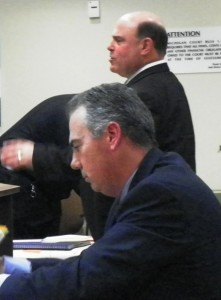
- Defense attorney Leon Weiss (top) and Asst. Prosecutor Robert Moran (bottom) during preliminary exam on Charles Jones in June, 2012.
These were the words of Wayne County Assistant Prosecutor Robert Moran in his closing arguments at the first-degree murder trial of Chauncey Owens, accused of killing Jerean Blake May 14, 2010. But Moran is also prosecuting Detroit police officer Joseph Weekley for “involuntary manslaughter” for shooting 7-year-old Aiyana Jones in the head with an MP-5 submachine gun on May 16, 2010, during a military-style police raid filmed by “The First 48” reality TV show. Police said they were seeking Owens.
So who killed Aiyana – Owens or Weekley? Why is the same man prosecuting both?
“The judge should have called a mistrial then and there,” Cornell Squires, a paralegal with We the People for the People, reacted.
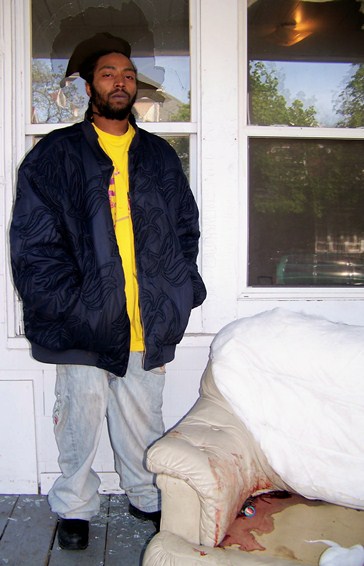
- Charles Jones, in shock the morning Aiyana was shot to death by Detroit police, stands next to bloody couch where she died May 16, 2010. Behind his head is the shattered windown through which police threw an incendiary stun grenade just prior to shooting the little girl in the head. Photo/Diane Bukowski
Moran’s words spoke volumes about the motivation of the police and prosecution in pursuing charges not only against Owens, but against Aiyana’s father Charles Jones 17 months later. Jones was ordered to crawl through bits of his child’s blood and brains after she was rushed out of their poor east-side flat by another killer cop, Kata-Ante Taylor, according to testimony in Weekley’s trial last June. That trial ended with a hung jury, but Weekley has yet to be re-tried after four years.
Weekley’s pre-trial, scheduled for Feb. 6, was once again postponed in a clear effort to await the results of the verdicts against Owens and Jones. The Jones jury is to hear closing arguments and begin deliberations Feb. 10, while the Owens jury has already brought back a “sealed verdict,” to be opened when the Jones case is complete. Weekley has been free on bond since his arraignment on charges of involuntary manslaughter, while Owens and Jones have languished in the Wayne County Jail since their arrests.
Before being subjected to hours of interrogation, Owens, arrested in an upstairs flat wearing only his trunks, was forced to sit on the blood-soaked couch where the little girl died as she slept with her grandmother, according to court files. Throughout the subsequent police interrogation, he was dressed in a plastic see through coat of some kind, and he repeatedly asked for his family to bring him clothing. Court records say that earlier police officers taunted him by putting a shower cap on his head.

- Houses where Shrron Hurt and friend Jay lived across the street from Jones family,
Owens’ brother Shrron Hurt, who testified at the trial, lived across the street from the Jones family. Hurt testified that he was at the scene of Blake’s killing with an individual named “Chris” on his moped. Owens and one other witness, Charles Howard (in a written statement not admitted at the trial) said Hurt killed Blake. If police would have charged Hurt instead of Owens, they would have had to admit that in the rush to judgment required by “48 Hours,” they raided not only the wrong flat but the wrong house, killing a seven-year-old little girl.
‘CONFESSION’ VIDEO SHOWN
The Owens interrogation, shown at the trial on video on Feb. 6, ended with a confession to Blake’s killing, but only after interrogators Sgts. Kenneth Gardner and Theophilus Williams belatedly let Owens discover that his little niece had died. Previously in that interrogation and during an earlier one by Sgt. LaTanya Brooks, Owens adamantly denied he killed anyone and said his brother Shrron Hurt, known as “Chinaman,” killed Blake.
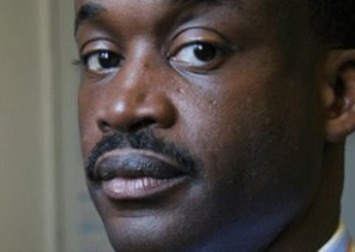
- Sgt. Kenneth Gardner was evidently also a star for A & E’s “The First 48,” since this photo, like that of Joseph Weekley, comes from that show’s website.
“I’m really pissed off about this,” Owens says in the beginning. “My brother’s little daughter got hurt [referring to Charles Jones, his brother in common law]. I’ve tried to cover up for my brother [referring to Hurt] too much.” He asks the interrogators repeatedly about Aiyana’s condition, but they claim [falsely] that they don’t know.
“My brother [Hurt] is from around here,” Owens says. “There’s all these guys, little gangs, little cliques, whatever. . . .Chinaman broke it down. His story was that he was on his moped at the store and [got into it] with a little boy. Chinaman pulled up to the house on Lillibridge, took the van, and took his gun with him. Later he went to Centerline where his wife is at.”
At one point in the video, Owens says he told Hurt, who called him afterwards to tell him to get out of town, “I’m not running from my home. I didn’t do shit, I’m not going no place, I swear to God on my mama’s grave.”
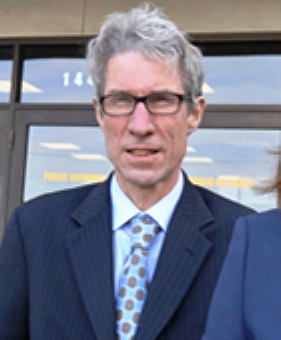
- Owens’ defense attorney David Cripps
Owens’ defense attorney David Cripps pointed out that Owens went home and was sleeping in bed when police raided his flat and the lower flat where Aiyana Jones was present with her grandmother, great aunt, uncle, two toddler brothers, and her mother and father. He said Hurt himself testified that he concealed his moped in his friend Jay’s house and had his wife come pick him up to take him to their home in suburban Centerline.
Gardner repeatedly told Owens he should confess because “there had already been enough pain” in his family with the injury of Aiyana, and that the family would blame him and become “alienated” from him if he tried to put the killing off on Hurt. Owens repeatedly asks to talk to his wife, LaKrystal Sanders.
“I love her so much,” he says.
Video: Jones did not provide gun to kill Blake
Later, Gardner calls Sanders on his cell phone, putting it on speaker. She is heard telling Owens, “’Yana’s dead.” Owens breaks down weeping and begins rambling. He ends by saying he and a group of people were walking down Lillibridge when Chinaman came by and said there had been an incident at the store and he needed help. Owens says the group went to the store and that a young man in the group unexpectedly handed him a gun.
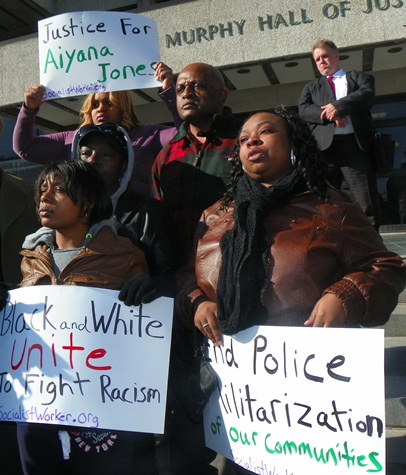
- LaKrystal Sanders is at right in this photo of Aiyana Jones family at rally in March, 2013. Her mother Dominika is at left, with grandmother Mertilla Jones behind her, and Aiyana’s maternal grandfather Jimmie Stanley at top.
In the video, Owens did not finger Jones for giving him the gun involved, as the “unbiased” major media, clearly operating on police leaks, has reported for four years, since one week after Aiyana’s death. Sgt. Gardner tries twice to get Owens to identify Charles Jones as the shooter, and also as the gun’s provider, but Owens says adamantly he did not identify Jones, but Chinaman as the killer and the young man as the one who gave him the gun.
Owens says he fired off the gun once, in the air as a warning shot, but says it must have gone off as he lifted his arm, demonstrating by raising his arm.
“I never wanted this to happen, I never wanted nobody to be killed,” he says. He describes a chaotic scene at the liquor store, with dozens of people present milling around.
Where is the second bullet?
All witnesses who said they were at the scene described TWO shots, leaving open the possibility that a second gun was fired. The murder weapon was identified as a .357 revolver; revolvers do not leave casings. However, police officers and evidence technicians at the scene, who appear to have conducted a rather cursory investigation according to one officer’s testimony, did not find a second bullet. Blake’s autopsy report shows that only ONE bullet entered his body.

- Where is the second bullet from the scene of Jerean Blake’s death?
After breaking Owens down to that point, Sgt. Gardner tells him he will “feel better” once he confesses. Then Sgt. Williams writes down a statement that does not include any of Owens’ allegations earlier in the session that his brother was responsible. Owens, rambling and intermittently weeping about Aiyana’s death, merely glances at it before signing it.
“So who acted guilty?” Cripps asked the jury in his closing statement. He recalled Hurt’s testimony that he put his moped inside “Jay’s” house, then called his wife to pick him up and take him out to their home in Centerline in Macomb County. Cripps alleged that Hurt gave two associates, known as “Ant” and “Anthony Bruce” the murder weapon as they sat outside his Lillibridge residence in a Black car and Hurt admittedly talked to them.

- Photo of “Birdman” moped/scooter.
Cripps revealed, with no objection from Moran, that the prosecution has had in its possession from the beginning a written statement from witness Charles Howard that two confederates of Hurt’s, “Jay” and “Dee,” told him that Hurt said he killed Blake after Blake tried to steal his “Birdman” moped. Wayne County Circuit Court Judge Richard Skutt barred Howard from testifying to that statement, ruling it was multiple hearsay.
But Howard did testify that he, Jay, and Dee knew Hurt well because they sold drugs for him out of Jay’s house across the street from the Jones family’s home, next door to Hurt’s residence. He said he had known Hurt since 2002. During testimony at Weekley’s trial in June 2013, officers testified that the neighborhood was known to be “drug-infested.” Hurt has pled guilty to a felony charge of attempted possession of methamphetamine and ecstasy pills in Detroit in 2009, as well as attempted assaulting and resisting a police officer in 2006, among other violations in a multi-county area.
Hurt was known in the neighborhood for showing off his white moped, Howard testified, swerving it through the streets repeatedly. Blake’s mother Lyvonne Cargill earlier admitted to giving police a statement that “kids, I don’t know who” at the scene of Blake’s killing told her someone nicknamed “Scooter” had killed her son.
So who killed Jerean Blake?
“Jail-house snitches” testify
As expected, two jail-house snitches took the stand to testify against Owens and Jones.
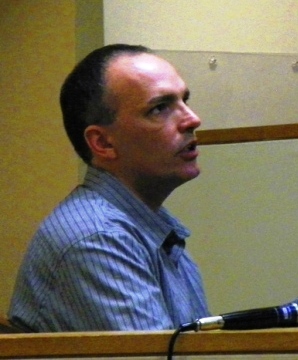
- Jay Schlenkerman testifies at Charles Jones’ preliminary exam in Jan. 2012.
The first, Jay Allen Schlenkerman, was incarcerated with Owens in 2011 on a domestic violence charge that was originally termed a “kidnapping” by Brownstown Township police. Police reports on the case indicated that he repeatedly beat his live-in girl-friend about the head and in the genitals, and forced her into the bathtub where he urinated on her, not allowing her to leave their house for three days. According to medical records, the beatings resulted in a closed head injury, leakage of brain fluid from her nose, and severe post-traumatic stress syndrome. That case was one of several such assaults on women for which Schlenkerman has been charged.
The Wayne County Prosecutor’s office dropped the charges to misdemeanor domestic violence and later reduced Schlenkerman’s probationary sentence after he told the prosecutor he had repeated conversations with Owens in which Owens told him about his and Charles Jones’ involvement in Blake’s killing.
Schlenkerman was set to be sentenced in a third OUIL case and on a fourth habitual offender charge Feb. 6. Jones’ defense attorney Leon Weiss and Cripps both noted the pending sentencing, which could have ranged up to life in prison, as a likely motive for Schlenkerman’s testimony. Records just posted from the Michigan Department of Corrections show Schlenkerman received sentences of six and 1/2 to 10 years on the OUIL count and a “fleeing and eluding police” count. He had boasted at the trial that the MDOC told him they were recommending a 23-month mininum.

- Quasim Raqid with his murder victim Shelley Hilliard, who was dismembered.
Cripps got him to admit that he lied during that trial, saying he did not drive a car in the case, and had not driven a car since 2002, despite numerous other OUIL’s on his record since.
Schlenkerman repeated some of his testimony at Jones’ preliminary exam, but in not as much detail. He did say that he reported Owen’s “confession” to him to Wayne County Deputy Richard Donahee. Donahee took the stand on the final day of testimony, however, and denied that Schlenkerman had done any such thing. On cross, he admitted the two “lived together” in an eight-man protective custody unit at the Dickerson jail.
The second witness, Qasim Raqib, who is serving a life sentence for second-degree murder, admitted that he had signed written agreements to testify against his co-defendant, another prisoner, and Charles Jones, in exchange for reduction of his charges from first-degree murder. He was involved in the killing and dismemberment of a transgender teen, Shelley Hilliard, who was to testify against him and others in a drug sting. He claimed Jones “told me about a gun he gave Mr. Owens, and that he [Owens] killed a little boy with the gun.”

- Judge Richard Skutt/Facebook photo
On cross, Weiss got Raquib to admit that he was a “lying murderer.”
At the close of testimony Feb. 6, both defense attorneys moved for directed verdicts from Judge Skutt, saying the prosecution had not met their burden of proof for the charges of First Degree Murder (for both defendants), felony firearms, and perjury. Skutt, however, denied their motions, saying the juries would have to make the determinations.
Two Black jurors were excused from the 14-member Owens jury as alternates. The jury reportedly returned a sealed verdict after deliberating all day Feb. 7. The Jones jury is to return for closing arguments and deliberations Feb. 10 at 9 a.m.

One of Dominika Jones’ favorite photos of Aiyana, just posted on Facebook. There is absolutely NO excuse for equating growing police violence and murder directed against poor communities with the violence born of poverty and despair which takes place within those communities.
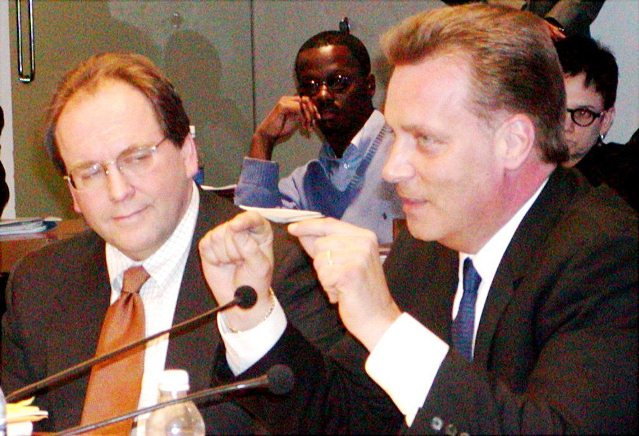
![]() Moody’s Sees Detroit COPs Repudiation as Isolated
Moody’s Sees Detroit COPs Repudiation as Isolated “We do not expect debt repudiation to become a frequently used tactic for local governments given the very strong credit fundamentals of the vast majority of COPs issuers,” Moody’s said. There are very few other Michigan issuers who have used similar debt instruments, and many states recognize lease-back obligations as valid, according to Moody’s.
“We do not expect debt repudiation to become a frequently used tactic for local governments given the very strong credit fundamentals of the vast majority of COPs issuers,” Moody’s said. There are very few other Michigan issuers who have used similar debt instruments, and many states recognize lease-back obligations as valid, according to Moody’s.


